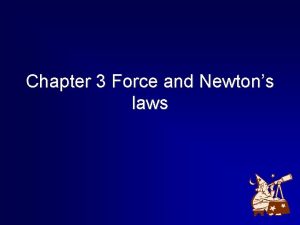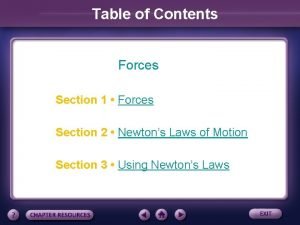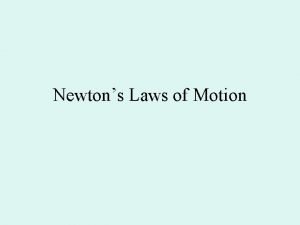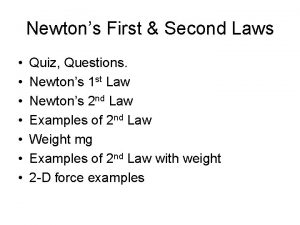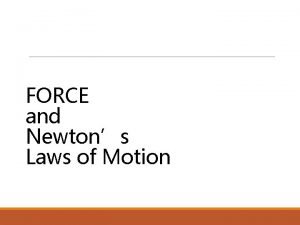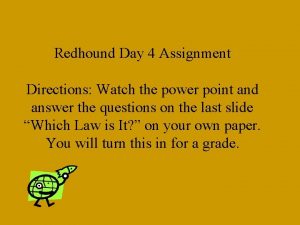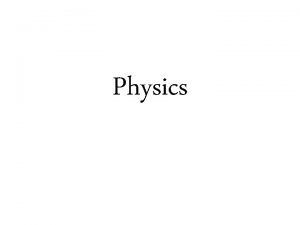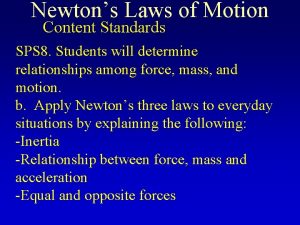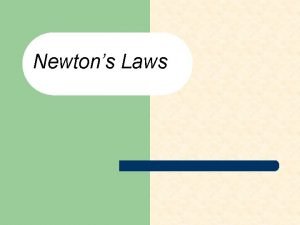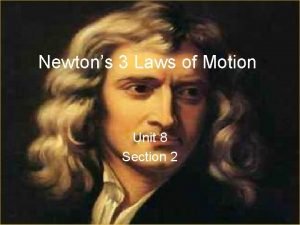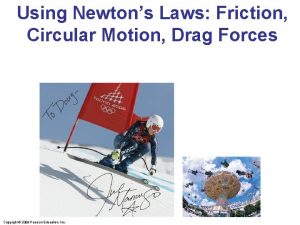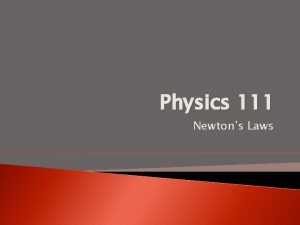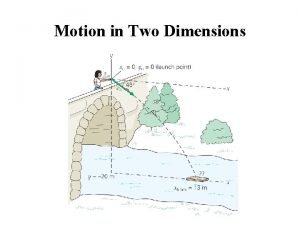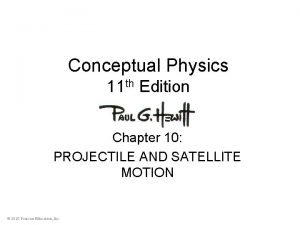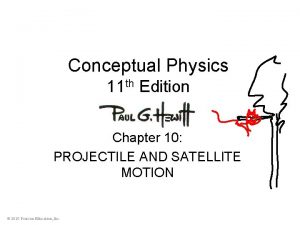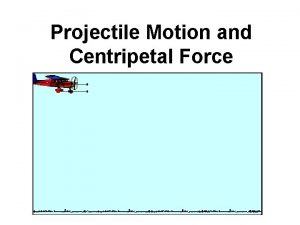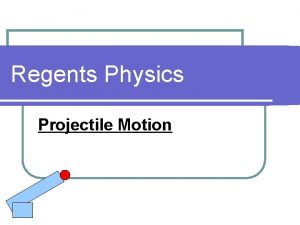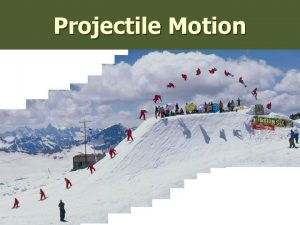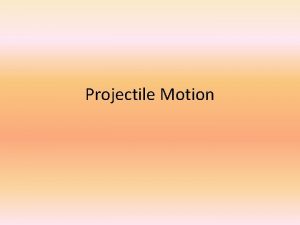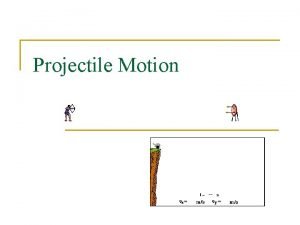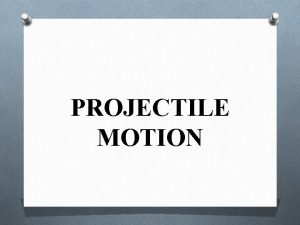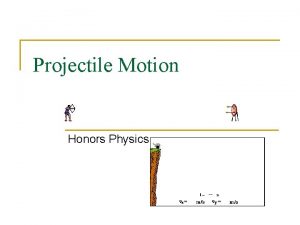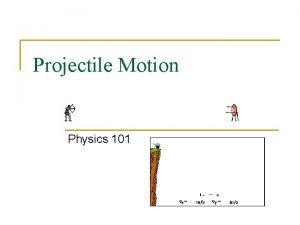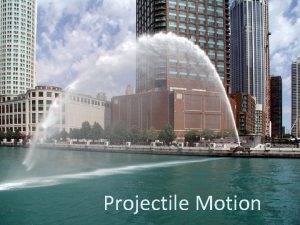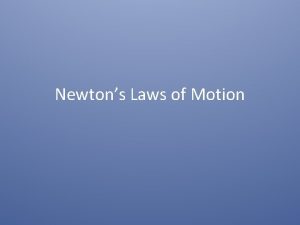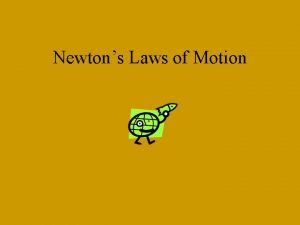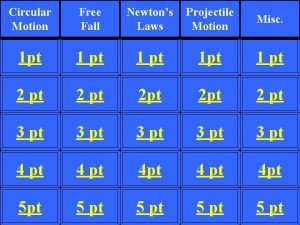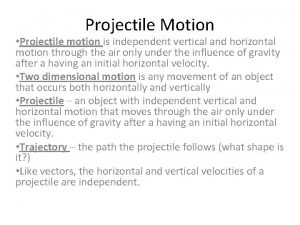PROJECTILE MOTION AND NEWTONS LAWS In Newtons own

























- Slides: 25

PROJECTILE MOTION AND NEWTON’S LAWS

In Newton’s own words…… Law 1 – “Every body perseveres in its state of rest, or of uniform motion in a right line, unless it is compelled to change that state by forces impress'd thereon” Law II – “The alteration of motion is ever proportional to the motive force impress'd; and is made in the direction of the right line in which that force is impressd’

The Problem A ball is dropped from a height y, another ball with the same mass is thrown horizontally from the same height y, which ball will land first?

They will both hit the ground at the same time !

Excellent Answer Safiya !!! Now Let’s Prove it………

The Quest: To build a device which will prove that when one object is in free-fall with another object which is thrown horizontally from the same height, they both hit the ground at the same time.

The Device

Close up of Pull-Solenoids

The Channel

Circuitry

Working Hard!

Making Connections…

Using a heat gun!

How it Works Two balls are placed on the platform. The solenoids allow one to free fall and the other to be projected simultaneously. The timer starts timing the event. When the balls hits the channel, the switch is triggered and the time is displayed for both balls. LED’s light up at the same time the balls hit the channel.

The Ideal Situation

Reality…… In 5 trials……… Ball “a” Projected Ball “b” Free Falling Ball Average time = 608 msec Average time = 710 msec

Possible reasons for small differences in time (102 ms) - - Slight differences in air density creating “drag” Slight differences in the way the plunger of the solenoid hits the ball Slight differences in the curvature of the ball

The Equation Projectile motion formulas include the following: **** d = vit + ½ at 2 (for horizontal and vertical motion, d can be substituted for x and y respectively), ex: x = vixt + ½ axt 2 y = viyt + ½ ayt 2 **** vf 2 = vi 2 +2 ad **** vf = vi + at

Physics Core Standards Standard 1: Analysis, Inquiry and Design Students use scientific inquiry and engineering design as appropriate to pose questions, seek answers and develop solutions

Physics Core Standards Standard 5: Energy and matter interact through forces that result in changes in motion. 5. 1 e - An object in free fall accelerates due to gravity. Friction and other forces cause the actual motion of a falling object to deviate from its theoretical motion. 5. 1 f – The path of a projectile is the result of the simultaneous effect of the horizontal and vertical components of it motion. These components act independently.

Physics Core Standards 5. 1 g – A projectile’s time is dependent upon the vertical component of it motion. 5. 1 h – The horizontal displacement of a projectile is dependent upon the horizontal component of its motion and its time of flight. 5. 1 i - According to Newton’s First Law, the inertia of an object is directly proportional to its mass. An object remains at rest or moves with constant velocity, unless acted upon by an unbalanced force.

Physics Core Standards 5. 1 k – According to Second Law, an unbalanced force causes a mass to accelerate. 5. 1 t – Gravitational forces are only attractive, whereas electrical and magnetic forces can be attractive or repulsive.

Standard 4 – Science (Intermediate) Ø Ø Energy and matter interact through forces that result in changes in motion. Students: - describe different patterns of motion of objects. - observe, describe and compare effects of forces (gravity, electric current, and magnetism) on the motion of objects

Acknowledgements Thanks to Professor V. Kapila for allowing us this opportunity to engage in such a wonderful and challenging learning experience. We will never forget it !

Acknowledgements Thanks to all the Teaching Assistants, and a special “thank you” to Keith Ching, Anshuman Prada and Padmini Vijaykumar for their expertise. The project was truly a learning experience !!!!!!! Thank you to Alex Betti for his patience and expertise in the machine shop.
 Newtons laws od motion
Newtons laws od motion What are newtons 3 laws
What are newtons 3 laws Newton's 3 laws of motion
Newton's 3 laws of motion Sir isaac newton laws of motion
Sir isaac newton laws of motion What are the laws of motion
What are the laws of motion Universal gravity constant
Universal gravity constant Newton's 3 laws
Newton's 3 laws Newtons laws of gravity
Newtons laws of gravity Section 3 using newtons laws
Section 3 using newtons laws Section 1 forces
Section 1 forces Elevator bank
Elevator bank Newton's st law
Newton's st law Newtons 3 laws quiz
Newtons 3 laws quiz Newtons laws definitions
Newtons laws definitions Newton's 3 laws
Newton's 3 laws Physics
Physics Law of newton
Law of newton Newton's first law example
Newton's first law example When the pellet fired into the spiral tube
When the pellet fired into the spiral tube 3 laws of newton
3 laws of newton Laws of motion
Laws of motion Newtons laws
Newtons laws An african elephant can reach heights of 13 feet
An african elephant can reach heights of 13 feet Velocity eq
Velocity eq Conceptual physics chapter 5 projectile motion answers
Conceptual physics chapter 5 projectile motion answers Chapter 10 projectile and satellite motion
Chapter 10 projectile and satellite motion








